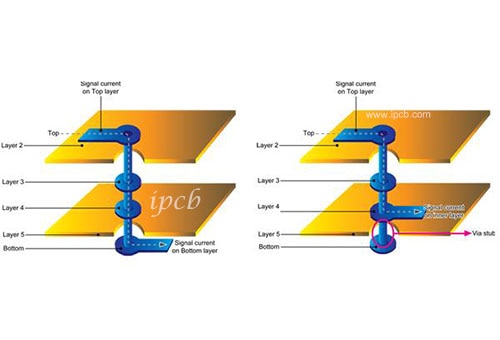To learn high speed PCB design, we must first know what transmission line is. The signal will be reflected because the wiring on the PCB has a certain impedance. If the impedance on the line does not match the impedance at the output end, the signal will be reflected. Signal transmission in PCB will have a delay, if the timing is not matched, the system will strike. These are all because of the transmission line problems.
What is a transmission line?
Transmission line is defined as the signal line with signal return (composed of two wires of certain length, one is the signal propagation path, the other is the signal return path) The common transmission line is the wiring on our PCB board.

1. The analysis of transmission line must contact the return path, a single conductor can not be a transmission line; 2. Like resistance, capacitance, inductance, transmission line is also an ideal circuit element, but its characteristics are quite different, it is better for simulation, but the circuit concept is more complex; 3. Transmission line has two very important characteristics: characteristic impedance and time delay.
Concept and structure analysis of transmission line in high speed PCB design
Transmission line impedance
First of all, let's clarify several concepts. We often see impedance, characteristic impedance and instantaneous impedance. Strictly speaking, they are different, but they are still the basic definition of impedance
The input impedance at the beginning of transmission line is referred to as impedance;
The instantaneous impedance that the signal meets at any time is called instantaneous impedance;
If the transmission line has a constant instantaneous impedance, it is called the characteristic impedance of the transmission line.
Characteristic impedance describes the transient impedance of a signal propagating along a transmission line, which is a major factor affecting the signal integrity of a transmission line circuit.
If there is no special description, the characteristic impedance is generally used to call the transmission line impedance.
Transmission delay
Time delay, also known as time delay (TD), usually refers to the time taken for electromagnetic or optical signals to pass through the whole transmission medium. The delay on the transmission line is the time taken for the signal to pass through the whole transmission line.
Propagation delay, also known as propagation delay (PD), usually refers to the time delay of electromagnetic signal or optical signal transmitted in the transmission medium of unit length, which is inversely proportional to the "propagation speed", and the unit is "PS / inch" or "s / M".
It can be seen from the definition that delay = propagation delay * transmission length (L).
Transmission line structure of PCB
The transmission line structure seen in a typical PCB is composed of wires embedded in or adjacent to dielectric or insulating materials and having one or more reference planes. The metal in a typical PCB is copper, while the dielectric is a glass fiber called FR4. Two common transmission line types in digital design are microstrip line and stripline.
The microstrip line usually refers to the routing of the outer layer of PCB, and there is only one reference plane. There are two types of microstrip lines: buried or non buried. Buried (sometimes referred to as "submerged") microstrip line is a transmission line simply embedded in the dielectric, but it still has only one reference plane. Striplines are inner layer traces between two reference planes.